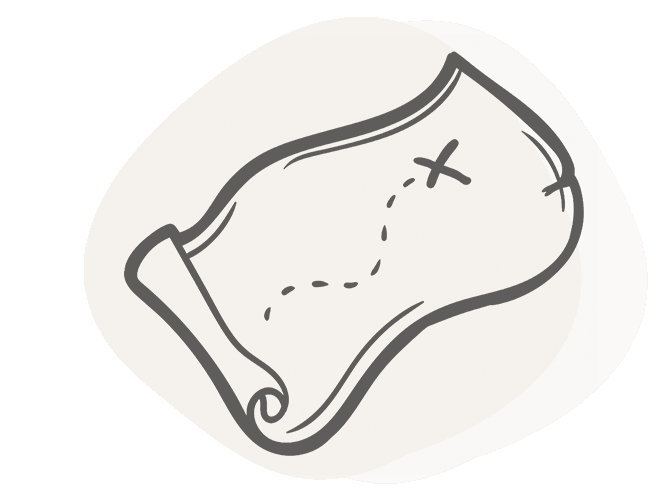
Hiking through the gorge, you will walk on wooden boardwalks, cross timber bridges, and climb 354 steps, admiring the wild rushing falls, ponds, and rapids that Stallenbach Creek has carved. Other highlights include a pilgrimage church on the remnants of a former hermitage and an enchanting forest chapel.
However, your trip doesn’t have to end once the hike is over! If you want the end of the day to find you visiting a fascinating ethnographic museum, an old silver mine, or a Renaissance Castle, Schwaz and Tratzberg Schloss are both within easy reach.
So if you are ready for an unforgettable day trip, here’s our guide to the Wolfsklamm Gorge!

Map of Wolfsklamm Gorge & Stans
| Difficulty: easy
| Trailhead: Brandstetterhof’s Parking, Stans
| Distance: 6,5km (from Wolfsklamm to St. Georgenberg)
| Time Needed: 3h
| Total Ascent: 400m
| Where to Eat: Wallfahrtsgasthaus St. Georgenberg, Pizzeria Da Capo, Bar Osteria Dove, Gasthof Himmelhof
| Where to Stay: Der Brandstetterhof, Reitbichlhütte, Das Urgestein, Haus Gasteig
| When to Visit: May to October


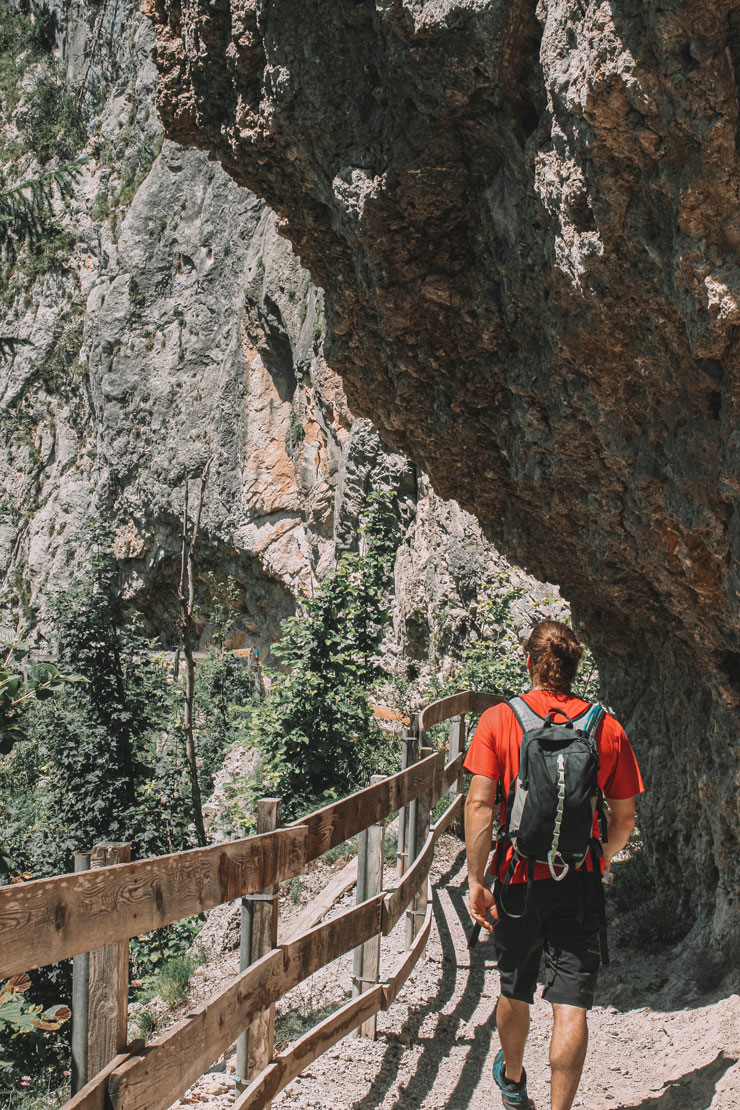
How to Get There
Wolfsklamm is located in Stans b. Schwaz, a small Tyrolean town between Innsbruck, the transport hub of the region, and Kufstein. Getting there by public transport is a breeze, especially if you are already in Tyrol, but having your own set of wheels allows you to explore a bit further.
By Train
The easiest way to get around is by ÖBB (Austrian Rail) regional trains stopping at Stans Bahnhof (railway station), the fastest being the S-Bahn. There are direct connections to Innsbruck (30min) and Kufstein (40min), while if you come from other cities such as Munich, Salzburg, or Vienna, you usually have to switch trains in Jenbach, Wörgl, or Kufstein.
As you get out of the station, follow the road on your left, and you will be at the Wolfsklamm’s entrance in less than 15min.
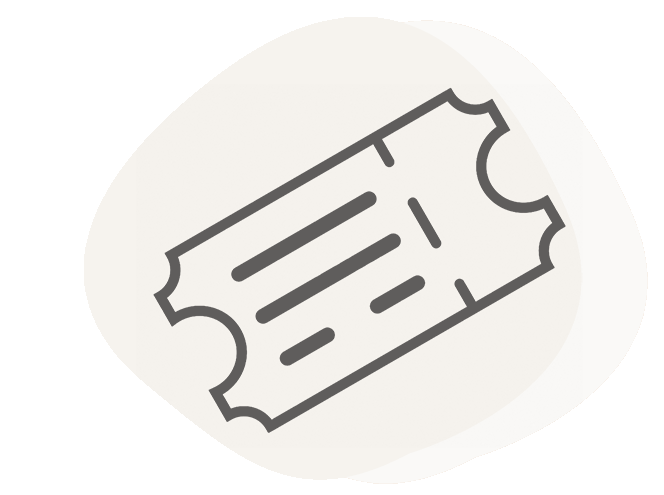
Budget tip: If you’re looking for a bargain, opt for the VVT Tagesticket Tirol 2Plus, a group ticket for 2 – 5 people that is valid for 24h of unlimited travel throughout Tyrol for a fixed price. And if you plan on spending more days in the region, check out the VVT Wochenticket Tirol. You can find them both here.
By Bus
There are not many buses taking you to Stans, except for Bus #4111, which runs between Brixlegg and Schwaz, stopping in Münster and Jenbach in between. So, unless you are already in one of these towns, you are better off booking a train ticket.
The bus drops you off at Vollksschule (Primary School) on Oberdorf street. From there, follow the slightly uphill road, and in less than 500m. you will be at the gorge.
By Car
Not only is Stans easily accessed by the A12 motorway but also offers free parking!
A bit to the outskirts of the town, you will find free parking spots at the football grounds and the railway station. In the town center, there are two more parking lots, one by the Volksschule, where the bus stops, and the other by the Laurentius Church and very close to the gorge’s entrance (see map).
There is also a paid parking lot, costing €3,00 for a day ticket, right next to the entrance of the gorge. The car park belongs to the Brandstetterhof Hotel, so make sure you park at the designated parking spaces for the Wolfsklamm’s visitors, as the rest are reserved for the hotel’s guests.

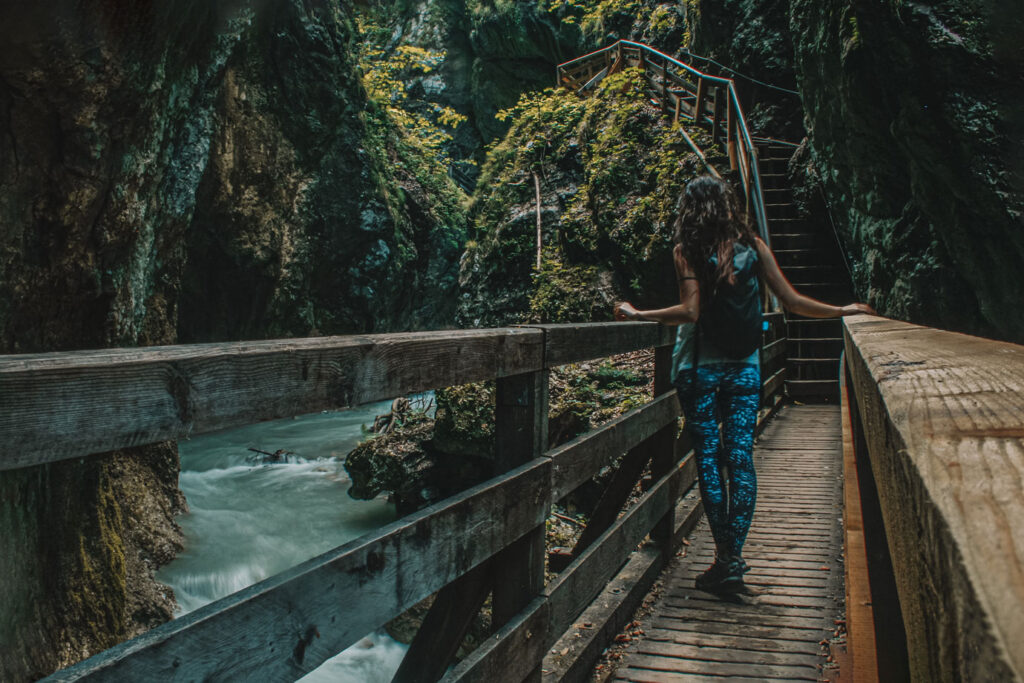


Opening Hours & Ticket Info
The gorge may be beautiful at any time of the year, but during the winter months, it closes for safety reasons. It only opens for the season that runs from the 1st of May to the 31st of October, from 9:00 a.m. to 4:00 p.m. However, be aware that even during the season, the gorge may be closed in bad weather.
A full fare ticket costs € 5,00, but if you travel in a group of 10 or more, you get to pay € 3,50. For kids from 6 to 14 years old, you can get tickets for € 1,50, while if you’ve got little ones under six years of age, they can enter for free. This contribution goes towards the daily inspection and maintenance of the boardwalks, and bridges of the gorge.
There are no tickets available online, so you simply buy them at the door with cash or by card.



The Wolfsklamm-St. Georgenberg Hike
1st Section: Getting to the trailhead of the hike
Getting to the entrance of the gorge is easy-peasy as there are signposts everywhere indicating the way to the Wolfsklamm.
If you have parked at the Brandstetterhof’s paid parking lot, then you are right at the trailhead of the hike. But even if you have parked for free elsewhere or have arrived by public transport, the gorge’s entrance will be only a few minutes’ walk away. On the banks of the Stanserbach stream, you will walk down into the valley and reach a tollbooth, where you pay the entrance fee.
2nd Section: The hike through the gorge
The first section of the path starts easy, leading gently uphill to a forest road. It is then followed by narrow trails with wooden bridges and steps squeezed between rock walls and waterfalls. Wire ropes attached to the side of the rocks help you move forward.
As you proceed further inside the gorge, a jungle-like experience awaits you. At once, the temperature becomes cool and humid, and thundering waters are ever-present, while plants, shrubs, and ferns overgrow the path and the rocks. The highlight is the impressive waterfalls of all shapes and heights.
3rd Section: St. Georgenberg Monastery
Out of the gorge, the path becomes wider, and signposts lead to the monastery of St. Georgenberg over the impressive Hohe Brücke.
Perched high on a rocky outcrop above the Wolfsklamm Gorge, the monastery has an incredible cliff-top setting with fabulous views of the surrounding forests and mountains. The only way to reach it is over the 50m long bridge, rising some 40m above the gorge.
Despite numerous calamities, such as bubonic plague, avalanches, and five fires, St. Georgenberg counts over 1000 years of existence. Built on the remnants of a former hermitage, the Benedictine monastery is a spiritual retreat and the oldest pilgrimage site in Tirol. The main objects of veneration are Saint George, a Gothic Pietà sculpture from about 1415, and the reliquary of the Holy Blood.
The on-site restaurant is a great place to grab a bite, while every 13th of the month from May to October, a night pilgrimage takes place.
4th Section: Taking the Way Back
To return to the trailhead, you can always follow the same way back to the entrance through the gorge.
Alternatively, right after you cross the Hohe Brücke, you can choose between two relatively longer paths. Following the one to your left, you will pass by the little chapel of Maria Tax, taking a quite steep forest path downhill. The trail to your right follows the wide “Pilgerweg” (Way of Cross) over Weng back down to Stans.

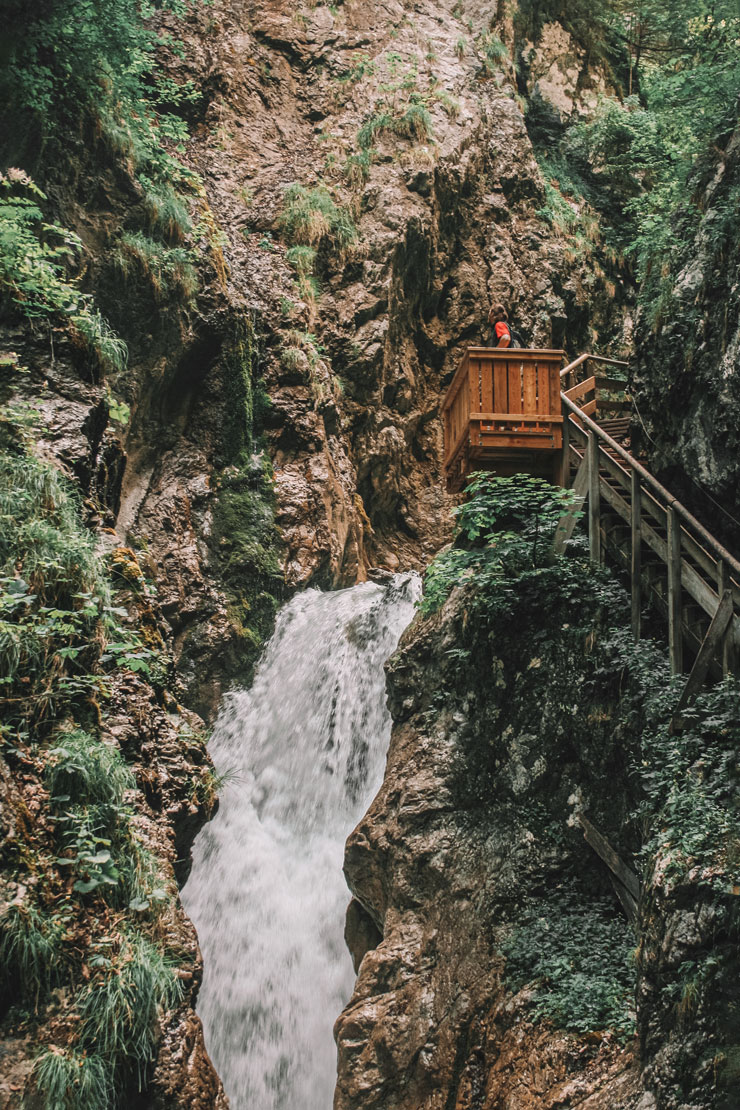

Attractions in Schwaz
Just 3km from Stans, the town of Schwaz is a great getaway for culture lovers. All attractions are gathered around the Pfarrkirche, with its copper-shingled roof and characteristic crenelated gables. The charming Altstadt (old town), the ethnographic museum, and one of the oldest silver mines in Tyrol are well worth a visit.
Freundsberg Castle
Perched on a knoll in the south of Schwaz stands the twelfth-century Freundsberg Castle that used to be the main seat of the Lords of Freundsberg. Nowadays, it hosts a small castle museum that displays a modest collection of nineteenth-century furniture and late-Gothic paintings and gives the visitor an insight into the history of Schwaz’s mining industry.

Ticket: €3,50 for adults – €2,50 for seniors and students | Opening times: April to October, Tuesday to Saturday, 10:00 – 17:00
People’s Museum
The unmissable Museum der Völker houses the intriguing ethnographic collection of Gert Chesi, a photojournalist who mostly worked in Africa and Southeast Asia and collected traditional artefacts along the way.

Ticket: €8,00 for adults – € 5,00 for the reduced one – free for children under six | Opening times: Thursday to Sunday, 10:00 – 17:00
The Silver Mine
Schwaz has been Tyrol’s main silver producer, and the old silver workings have now been transformed into one of Austria’s most popular show mines. The Silberbergwerk offers an exhilarating kilometer-long train ride into the mine, followed by an hour-long walking tour of the interior.

Ticket: €18,00 for adults – €16,00 for students, young people aged 15 and 18, and seniors – 11,00€ for children aged 5 to 14 | Opening times: daily, 10:00 – 16:00



Schloss Tratzberg
Built on an over 100m rock ledge, the imposing Renaissance Tratzberg Castle was one of Maximilian I’s former hunting lodges.
The castle is only accessible by an hour-long guided audio tour available in 8 languages. You will retrace the lively history of the castle by visiting its many rooms, from the Gothic Fuggerstube and the Hunting Room with its hand-carved, life-size animal and hunting scenes to the Queen’s Chamber with a secret door and a Renaissance wooden ceiling. What will captivate you most, however, is the Habsburgersaal, the great ballroom featuring a 46m-long wall painting from 1508, which depicts Emperor Maximilian’s 148 ancestors.
Getting There
Take Bus #4111, with the direction Brixlegg, from either the bus stop Schwimmbad or Volksschule, and you will be there in 4-7 min, respectively. Alternatively, starting from the Laurentius church car park, follow the 8km signposted path to the castle. The first and the last part of the hike is on an asphalt road, while the one in between, which is the largest one, runs through a beautiful mixed forest.

Ticket: €13,50 for adults – €9,50 for youth aged 13 to 17 – 8,00€ for children under 12 – discount for visitors of the Silbergwerk | Opening times: daily from April to early November, 10:00 – 16:00

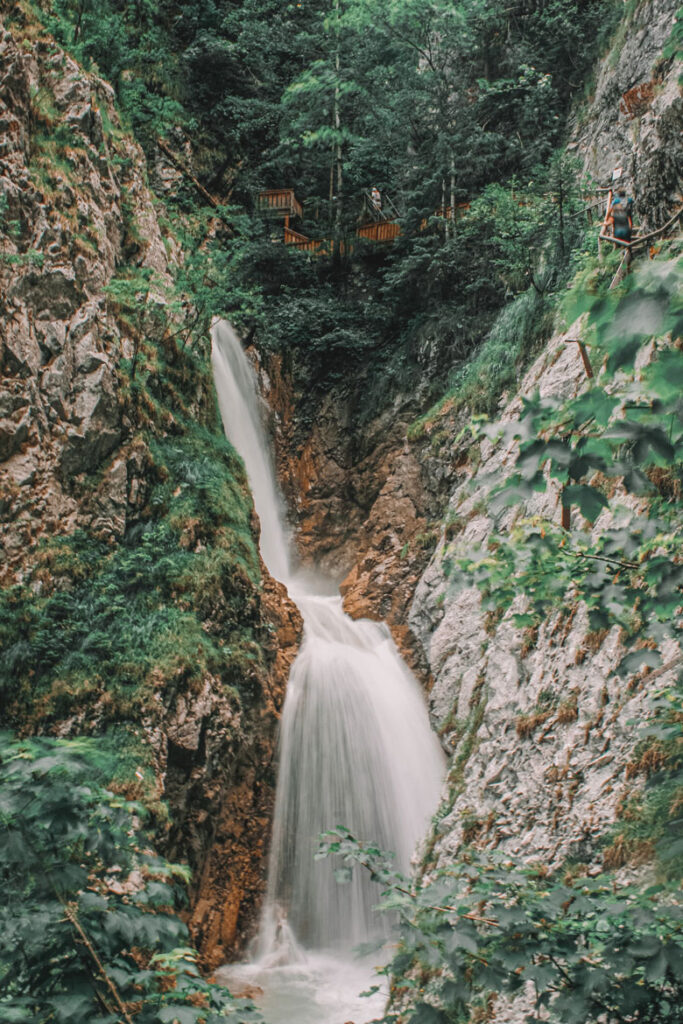

Where to Eat
| Wallfahrtsgasthaus St. Georgenberg: By the time you arrive in St Georgenberg, you will have hiked for about 1 1/2 hours, so there is no better way to treat yourself than trying the traditional dishes in the monastery’s restaurant. Here you will be pampered with delicious dishes from the region under the shade of ancient chestnut trees before making your way back to Stans.
| Self-service Restaurant Steiner: This is a cosy inn where you’ll get to try simple but delicious and inexpensive local dishes. Come hungry, as the portions are generous!
| Pizzeria Da Capo: Right next to the free parking lot at the sports grounds, Da Capo is a nice place to taste fresh pasta and stone oven pizza before heading out to visit the gorge or after the hike.
If you make it to Schwaz, Bar Osteria Dove and Gasthof Himmelhof are both recommended for dining and so is Cafe Radio if you crave a burger.

Where to Stay in Stans
| Luxury Hotels: If you are looking for an adults-only romantic escapade, there is no better place than Der Brandstetterhof, offering a spa, a natural outdoor pool, and dishes prepared with ingredients from its very own herb garden.
On the other hand, if you travel with little ones, Hotel Schwarzbrunn is a better choice as it provides a playground and free professional child care for children over three. With its rustic Tyrolean interiors, a fitness and health club, and a spa oasis comprising numerous saunas, steam baths, and glacier water, this all-inclusive resort strikes just the right balance between nature and wellness.
| Rustic Huts: If you’d rather exchange the comforts of a 4-star hotel for a rustic cabin in the woods, and hiking to get there is no prob, Reitbichlhütte is the perfect getaway. Cosy Roßweid Hütte im Karwendelgebirge may be slightly more equipped, but it is set in equally gorgeous surroundings.
| Mid-range Guesthouses: The spotless and charming Das Urgestein offers two-bedroom apartments and holiday homes with fully-equipped kitchens and private spa facilities such as an infrared cabin or an outdoor hot tub. Close by, the tranquil Haus Gasteig features two big bedrooms, a kitchen equipped with everything you might need, and a balcony with garden views.

Tyrol is a gorgeous region in the Alps, and the Wolfsklamm is just one of its hidden gems. So why not explore the rest that it has to offer? Cause from the majestic capital, Innsbruck, to the picturesque village of Alpbach and gorgeous alpine lakes such as Drachensee and Seebensee, Tyrol has a place for everyone!
